When life gives you trees, make paper.
That was one of the first thoughts to cross my mind as I explored what’s now called Chung Hsing Cultural and Creative Park (中興文化創意園區, CHCCP) in Yilan County’s Wujie Township (五結).
Northeast Taiwan boasts an abundance of forest resources. Yilan County is home to both Taipingshan National Forest Recreation Area (太平山國家森林遊樂區) — by far the largest reserve of its kind in the country — and Makauy Ecological Park (馬告生態園區, see “Towering trees and a tranquil lake” in the May 13, 2022 edition of this newspaper). So it was inevitable that industrial-scale paper making would flourish in the region.
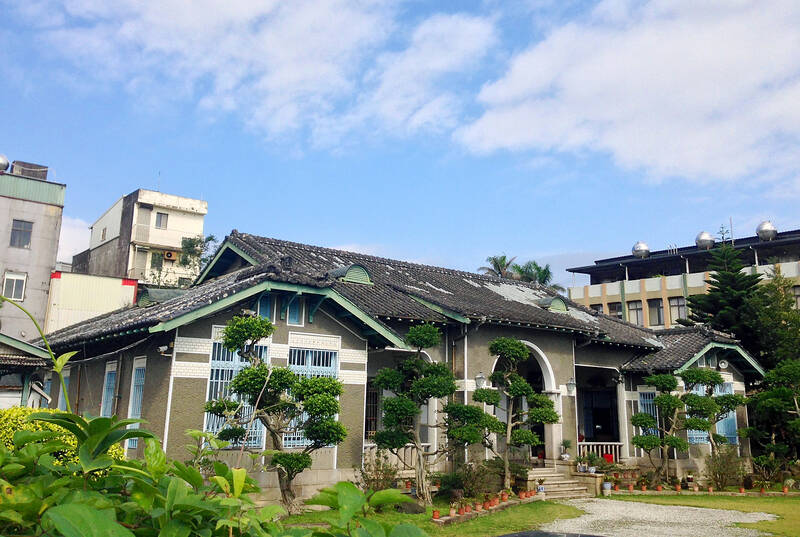
Photo: Wikipedia
Taiwan Chung Hsing Paper Corporation, which came into being in 1958, took over a newsprint manufacturing site that was established by Japanese business interests in 1919. Chung Hsing was unusual in that it was a joint venture between the national government and the provincial government.
Among its employees was the father of democracy activist Deng Nan-jung (鄭南榕, 1947-1989). Within CHCCP, a small memorial named Nylon Cheng Square (南榕廣場) honors him. “Nylon” was a nickname he adopted; Cheng is the Mandarin pronunciation of his family name.)
Since paper production ceased here in 2001, the park’s warehouses and office spaces have been allotted to startups and cultural-creative enterprises. On the Wednesday I visited, most of these businesses were closed — which was fine by me, as I’ve always been more interested in mammoth structures and rusting machinery.
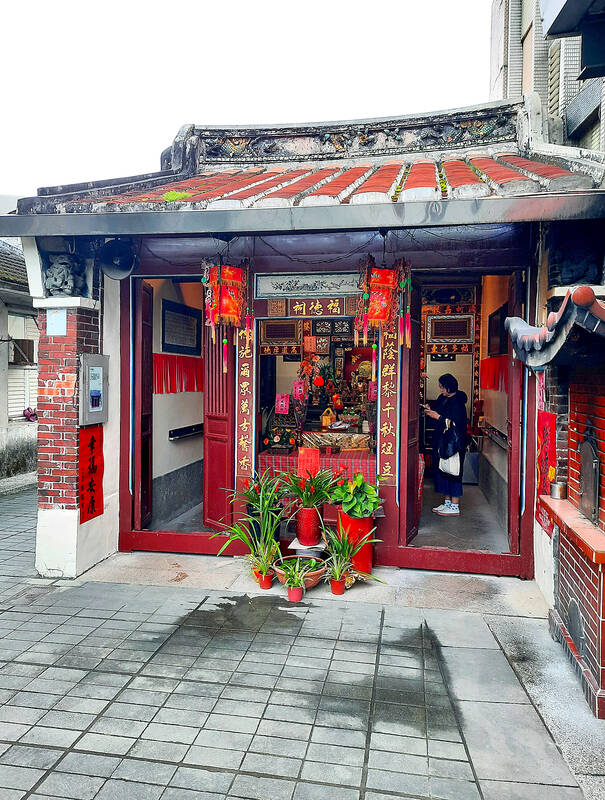
Photo: Steven Crook
It’s not possible to get into any of the semi-ruined buildings that dominate the northern half of CHCCP, but at several points visitors can peer inside. Whoever designed the metal screens which keep people out deserves plaudits: They’re both effective barriers and meaningful works of art that underscore the ecological impact of clearing woodlands.
The park also has something for train fans. At the eastern edge of the property — appropriately close to Taiwan Railways’ Yilan Line and the little-used Zhongli (中里) station — stands an historic steam locomotive. The CT284, assembled in Japan in 1953 and purchased by Taiwan with financial assistance from the US. For 30 years it pulled express trains between Keelung and Kaohsiung at speeds of up to 100 km per hour.
If you want to get to/from CHCCP by train, be warned that walking between it and Zhongli station takes a little longer than you might think, because you need to use a pedestrian underpass to get from one side of the railroad to the other. Also, when checking the schedule, don’t confuse Zhongli in Yilan with Zhongli (中壢) in Taoyuan.
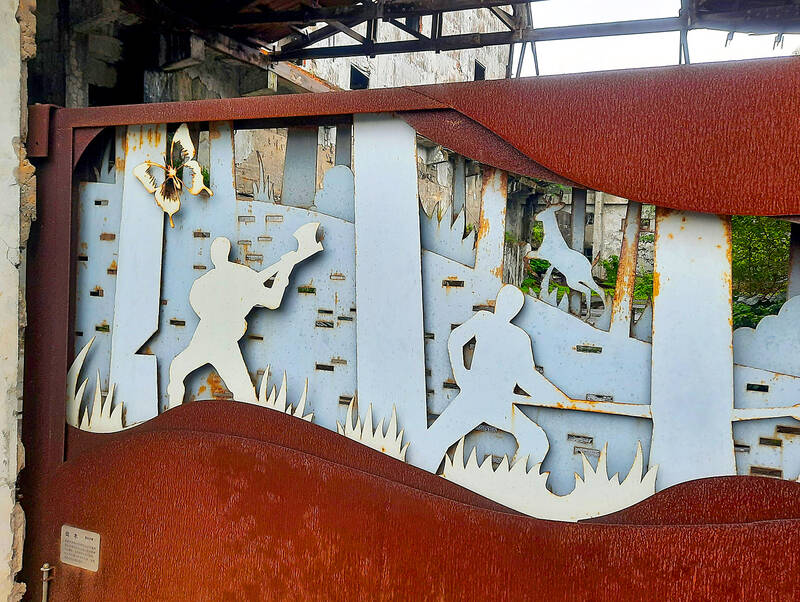
Photo: Steven Crook
A half-hour walk from CHCCP leads to another place connected with the exploitation of Taiwan’s forests. What with its graceful Japanese-style wooden buildings and wetland-like lumber pond, Luodong Forestry Culture Park (羅東林業文化園區) is quite different to the Chung Hsing site. For more details, see this newspaper’s Jul. 5, 2019 travel page (“Relics of the forest”).
Yilan County has a reputation for wet weather. It drizzled most of the time I was in Wujie and, as the local train carried me north to Toucheng (頭城), the sky remained gloomy.
TOUCHENG OLD STREET
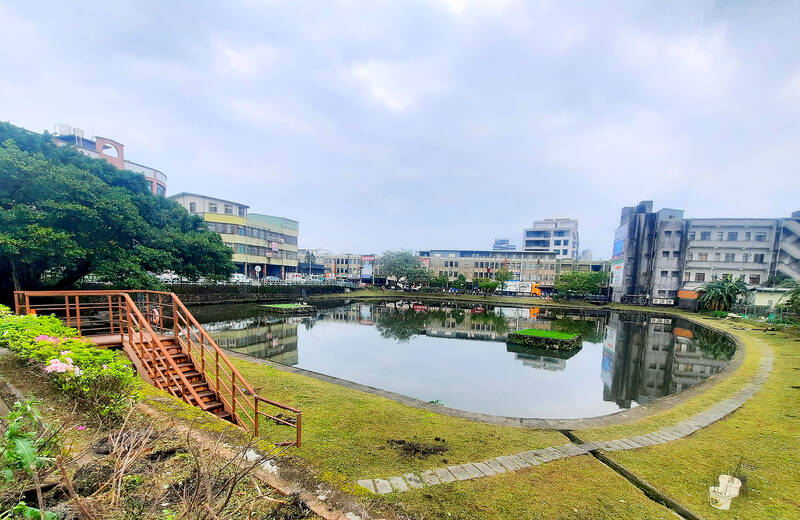
Photo: Steven Crook
The township’s most striking building is Lanyang Museum (蘭陽博物館). I went there years ago; this time, I wanted to see if Toucheng Old Street (頭城老街) has any significant appeal.
Like most of the other “old streets” around Taiwan, Toucheng’s most timeworn thoroughfare was once a trade nexus. Its glory days of prosperity ended soon after 1892, when the Yilan River (宜蘭河) changed course, becoming a tributary of the Lanyang River (蘭陽溪), instead of flowing directly to the sea at Toucheng’s Wushi Harbor (烏石港). This greatly reduced the harbor’s importance to merchants who used rivercraft to move goods in and out of the interior.
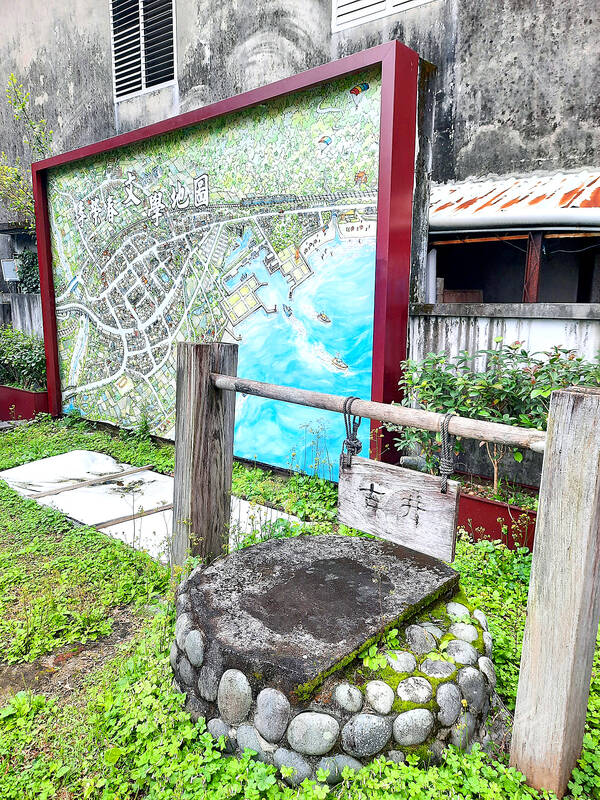
Photo: Steven Crook
Businesses along the old street limped on for a few more decades, until the completion of the Yilan Line in 1924. That allowed Toucheng to be bypassed altogether.
Unlike some other old trading towns — such as Yanshuei (鹽水) in Tainan — Toucheng never had a defensive wall. This doesn’t mean the area was always peaceful. In the late 18th century, there was at least one violent conflict between incoming Han settlers and indigenous people. It’s said the two sides only reached an understanding after the leader of the Han pioneers shared medicine with local Kavalan families during a smallpox epidemic.
Since the KMT dictatorship, Toucheng Old Street has officially been known as Heping Street, and a notice attached to the front of number 152 provides some local history. In its heyday, this place was known as Shisanhang (十三行, literally “13 businesses”). Just two of the 13 are still standing; they’ve been thoroughly renovated but aren’t open to the public.
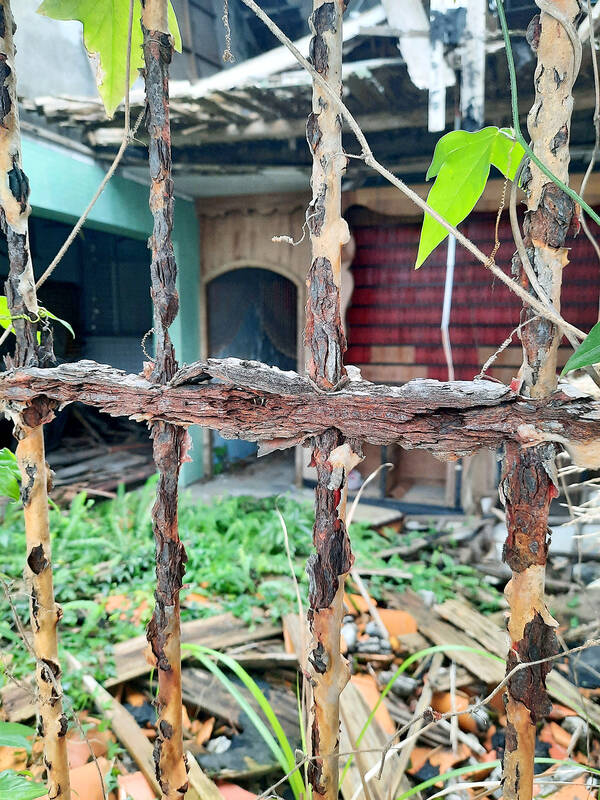
Photo: Steven Crook
Number 152 is one of the two. According to the notice, its foundations consist of ballast stones from China, while its walls — up to 27 cm thick — were built using pressed earth blocks. The frame is wood, as is typical of pre-1895 structures.
Even the most casual sightseer will notice two landmarks around the intersection of Heping Street and Heping West Road (和平西路). The most obvious is a pond. The other is a sizable single-story abode at number 139 Heping Street.
According to the information panel outside the building, Lu Zuan-xiang’s Mansion (盧纘祥公館) was completed in 1928. Lu, who lived from 1903 to 1957, was a published poet, and In 1951 he became Yilan County’s first elected magistrate. His mansion continues to serve as a private residence, so the curious have to satisfy themselves with peering over the wall.
The current name and status of the body of water isn’t clear. For a time it was a county-level relic, but the owner planned to fill it in so the land could be developed. Some local politicians and activists have campaigned for it to be designated the Site of Touwei Port (頭圍港遺址), as this is where merchants (among them Lu’s forebears) supervised the loading and unloading of cargo-carrying boats. Back then, presumably, the pond was connected to the creek that now runs just northeast of here.
Nearby there’s a sealed well, but I’m not sure if this is the water source that the Lu clan owned yet are said to have willingly shared with their neighbors.
At the quieter end of Heping Street I turned down an alleyway on a whim, and — in keeping with the day’s themes of dilapidation and decline — immediately came across a derelict Buddhist hall of worship.
Lianguang Temple (蓮光寺) was founded in 1938 and reconsecrated in 1970. Around 2000, its icons were moved to a rural location about 1km away. Photos online suggest it’s thriving in its new home.
The old shrine’s concrete shell appears to be intact, but everything that can rot has fallen apart, and everything likely to rust is heavily corroded. Humans may move away, but Yilan’s famously damp climate relentlessly continues its work.
Steven Crook has been writing about travel, culture and business in Taiwan since 1996. He is the author of Taiwan: The Bradt Travel Guide and co-author of A Culinary History of Taipei: Beyond Pork and Ponlai.

The Taipei Times last week reported that the rising share of seniors in the population is reshaping the nation’s housing markets. According to data from the Ministry of the Interior, about 850,000 residences were occupied by elderly people in the first quarter, including 655,000 that housed only one resident. H&B Realty chief researcher Jessica Hsu (徐佳馨), quoted in the article, said that there is rising demand for elderly-friendly housing, including units with elevators, barrier-free layouts and proximity to healthcare services. Hsu and others cited in the article highlighted the changing family residential dynamics, as children no longer live with parents,

It is jarring how differently Taiwan’s politics is portrayed in the international press compared to the local Chinese-language press. Viewed from abroad, Taiwan is seen as a geopolitical hotspot, or “The Most Dangerous Place on Earth,” as the Economist once blazoned across their cover. Meanwhile, tasked with facing down those existential threats, Taiwan’s leaders are dying their hair pink. These include former president Tsai Ing-wen (蔡英文), Vice President Hsiao Bi-khim (蕭美琴) and Kaohsiung Mayor Chen Chi-mai (陳其邁), among others. They are demonstrating what big fans they are of South Korean K-pop sensations Blackpink ahead of their concerts this weekend in Kaohsiung.

Oct 20 to Oct 26 After a day of fighting, the Japanese Army’s Second Division was resting when a curious delegation of two Scotsmen and 19 Taiwanese approached their camp. It was Oct. 20, 1895, and the troops had reached Taiye Village (太爺庄) in today’s Hunei District (湖內), Kaohsiung, just 10km away from their final target of Tainan. Led by Presbyterian missionaries Thomas Barclay and Duncan Ferguson, the group informed the Japanese that resistance leader Liu Yung-fu (劉永福) had fled to China the previous night, leaving his Black Flag Army fighters behind and the city in chaos. On behalf of the

I was 10 when I read an article in the local paper about the Air Guitar World Championships, which take place every year in my home town of Oulu, Finland. My parents had helped out at the very first contest back in 1996 — my mum gave out fliers, my dad sorted the music. Since then, national championships have been held all across the world, with the winners assembling in Oulu every summer. At the time, I asked my parents if I could compete. At first they were hesitant; the event was in a bar, and there would be a lot